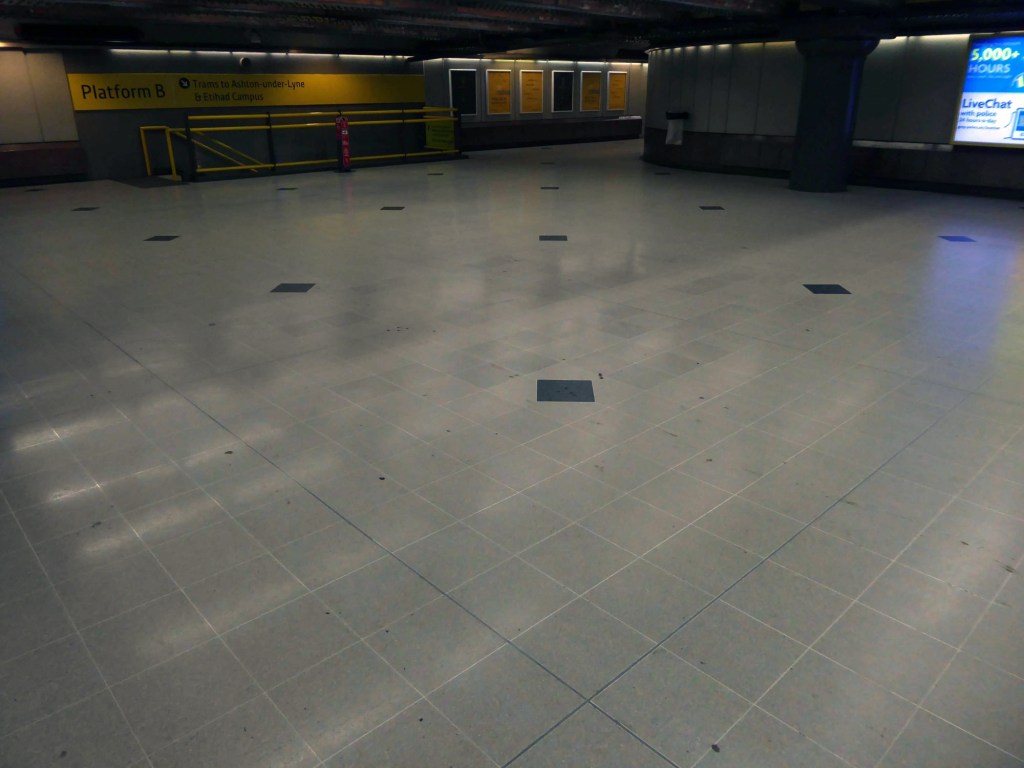
We set sail from Piccadilly tram stop, all aboard for Ashton-under- Lyne.
First stop the Velopark stop – where we find Cruikshank and Seward’s former CIBA Clayton Aniline Offices


At its peak in the 1970s, the site occupied over 57 acres and employed over 2,000 people. However, due to the gradual demise of the British textile industry, most textile production shifted to countries such as China and India with the textile dye industry following.
In 2002, the company made 70 members of staff redundant and in 2004 the announcement was made that the site would be closing with the loss of over 300 jobs. A small number of staff were retained to assist in the decommissioning of the plant. The last workers left the site in 2007 and the remainder of the buildings were demolished shortly afterwards.
And a lonely bank.
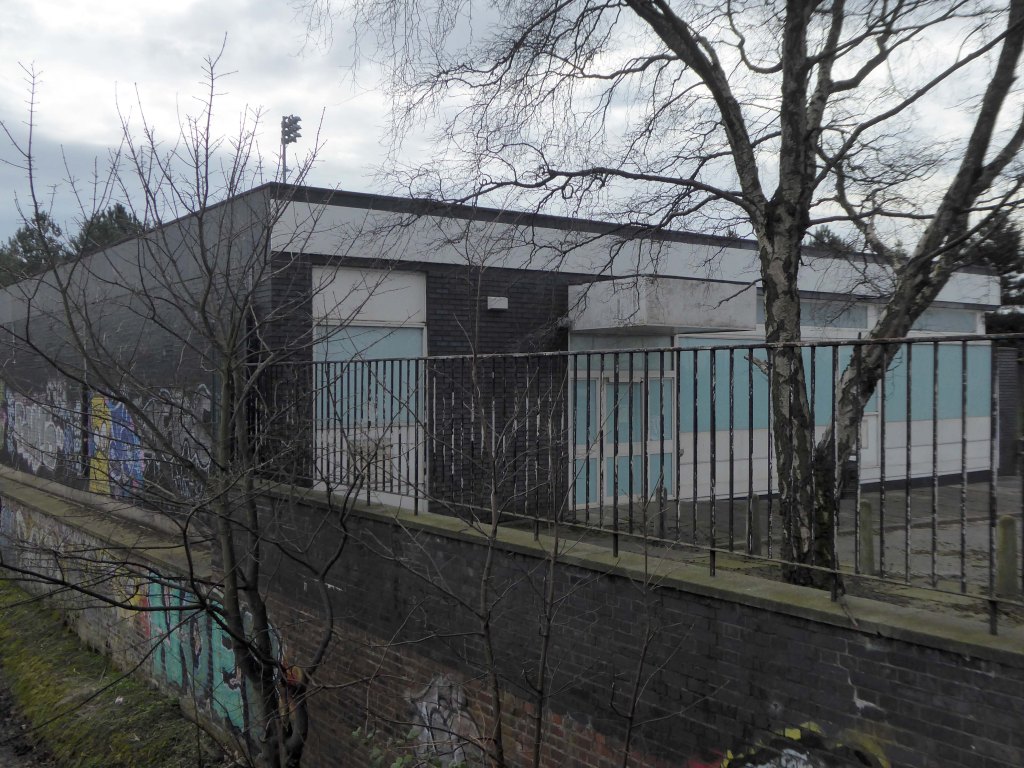
And another former bank.

This was an area once teeming with workers, all requiring top-flight financial services on tap.
Including those from the Stuart Street Power Station closed in 1975 and Bradford Colliery closed in 1968 – which was on the site now occupied by the Etihad Stadium, built to host the 2002 Commonwealth Games.
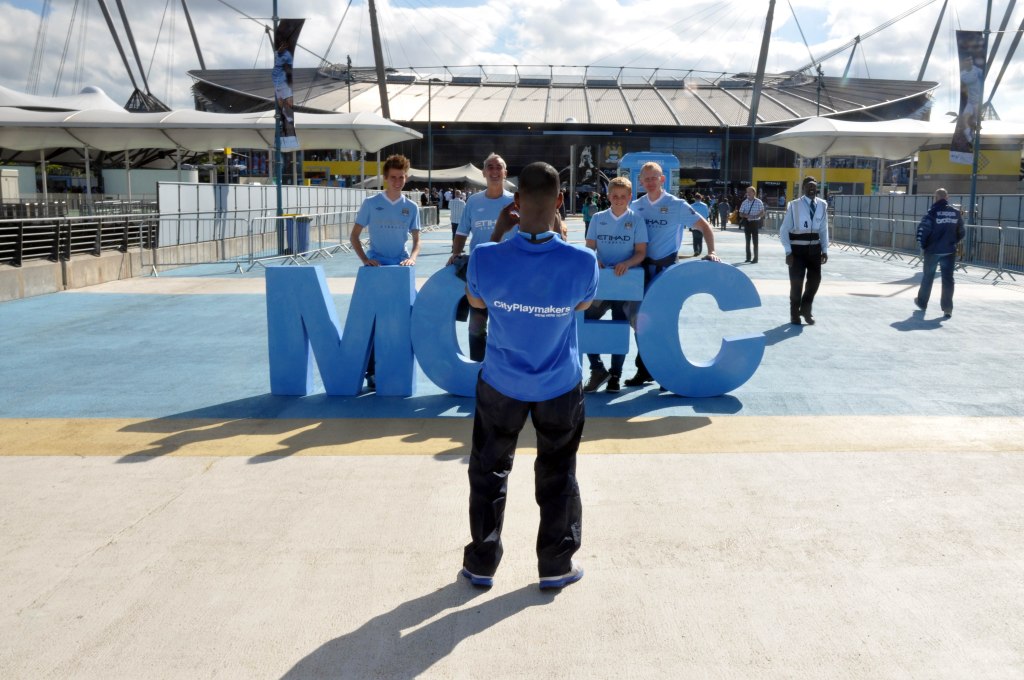
Arup designed the stadium to be:
An intimate, even intimidating, gladiatorial arena embodying the atmosphere of a football club.

Nearby is the the Manchester Velodrome which opened in 1994, designed by Faulkner Browns Architects – cited as the major catalyst for Britain’s successes in track and road cycling and has been described by Cycling Weekly as the:
Beating heart of British Cycling’s ascension to the top of world cycling.
Onwards now walking along North Clayton Road to St Willibrord’s 1937-38 by Reynolds and Scott built in buff brick of a Modernist Byzantine style.
The church was Grade II listed in June 1994.

Back on the tram and up to Droylsden and the Concord Suite
Architects: Bernard Engles & Partners.


Around the corner next along Greenside Lane towards the New Inn no longer the New Inn.

Then around another corner to Chappell Road where we find St Stephen’s RC Church.
The church and attached presbytery were built from designs by Greenhalgh & Williams in 1958-9, the church being consecrated on 12 May 1960. A reordering took place, probably in the 1960s or 70s, when the altar rails were removed and the altar moved forward. Probably at the same time, the font was brought into the church from the baptistery.

Back to the tram and onwards to Ashton-under-Lyne.
Pausing to take a look at the almost brand new Transport Interchange – one of four Ashton Bbus Stations that I have seen come and go.
Architects were Austin Smith Lord.

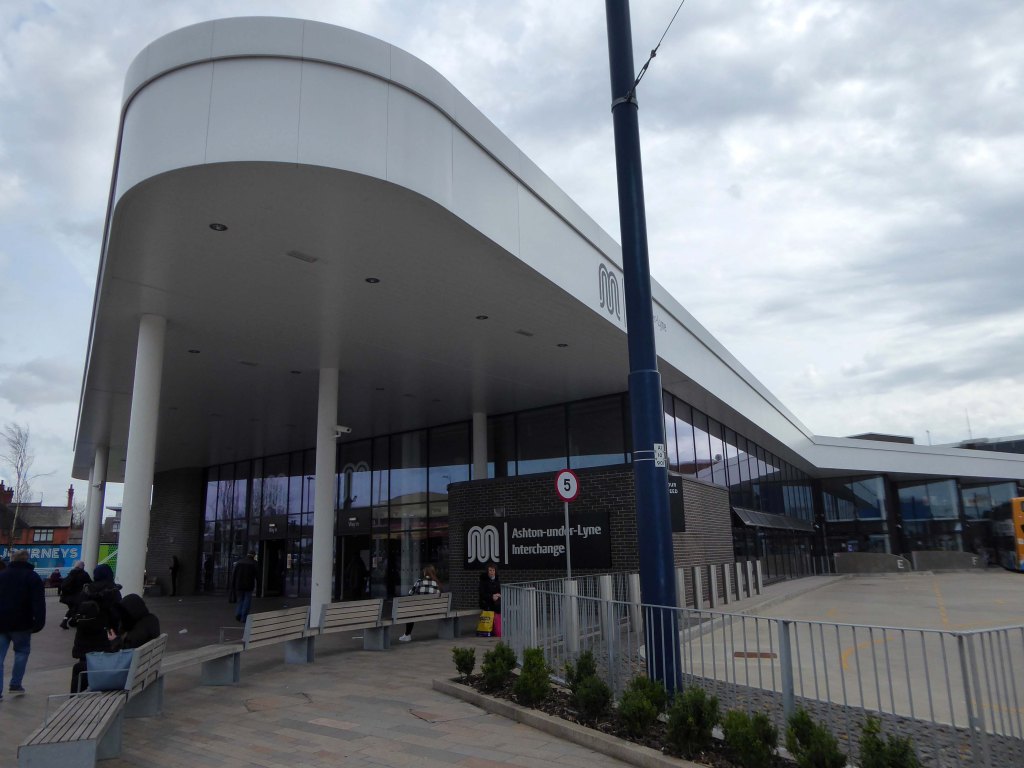
Where we discover that son of the desert Beau Geste.
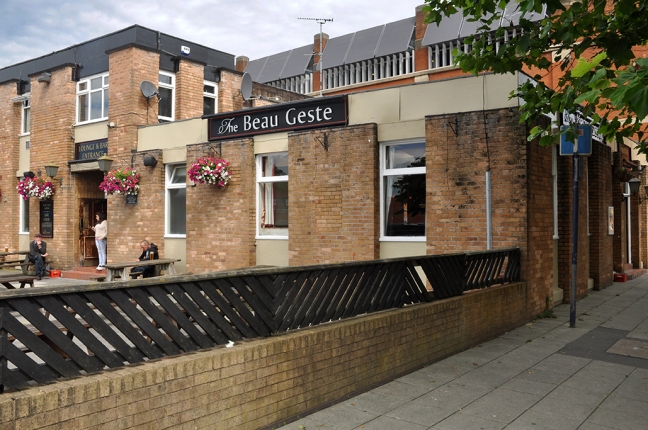
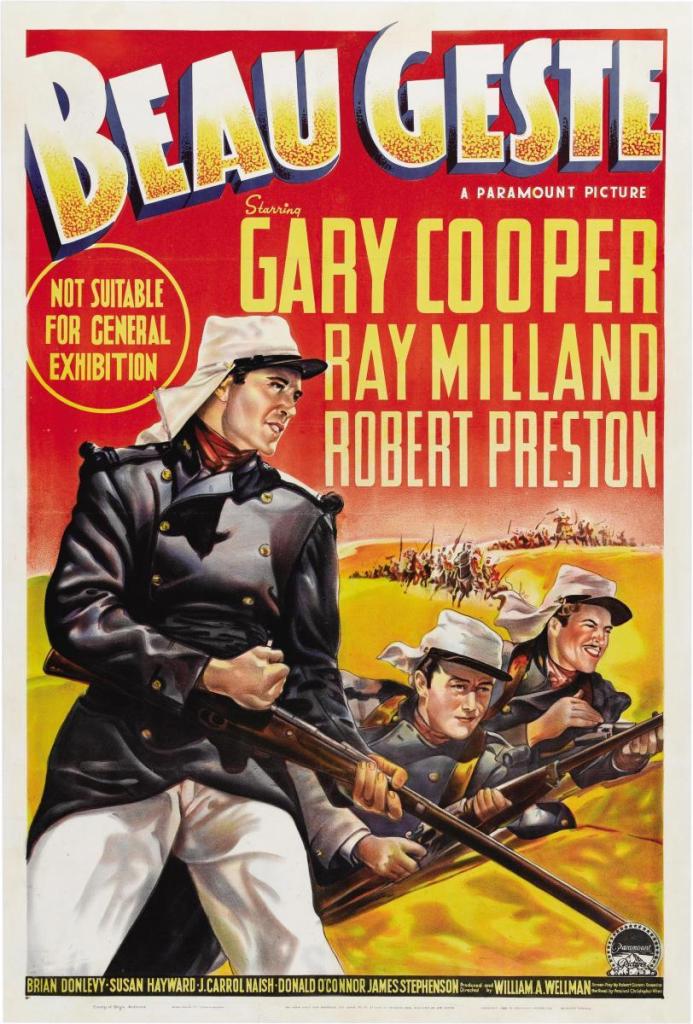
Across the way the Ladysmith Car Park.

Off now to the seriously neglected Tameside Hippodrome.

Originally opened on 21st November 1904 as a music hall theatre for the Broadhead’s Theatres chain. Films were screened as part of the opening programme. The Empire-Hippodrome Theatre’s auditorium was completely gutted in 1933 and the present stalls, plus single balcony, Art Deco style interior was constructed. This replaced the previous two balconies plus box arrangement. The exterior was largely unchanged.
The architects responsible for the present auditorium are Drury and Gomersall, the exterior and original were by JJ Alley.
It reopened as the New Empire Cinema on November 4th, 1933 and was equipped with a Compton 3 manual, six ranks organ, which had an illuminated surround. It was taken over by Union Cinemas in 1937 and then by Associated British Cinemas – however it was not renamed ABC until 1963. In 1964 the council took over the building and the Compton organ was removed.
It closed on 5th April 1975 and reopened as a live theatre in May 1976 with a summer film season which lasted until 1986.
Around the corner to the former Pavilion cinema – known locally as the Bug Hut.

The Picture Pavilion opened on 21st December 1908.
The Pavilion Cinema was rebuilt in 1947 to the plans of architectural firm Drury & Gomersall who at the same time redesigned the adjacent Alexandra Billiard Hall. The Pavilion Cinema became the first cinema in the town to be equipped with CinemaScope, opening with Richard Burton in The Robe on 29th November 1954.
The independently operated Pavilion Cinema closed on 8th October 1966 with Donald Pleasance in Cul de Sac and Barry Sullivan in Intimacy. It became the Star Bingo Club, which in later years was operated by Coral Bingo and finally by Gala Bingo Clubs, until they moved into new premises in 2000.
Off now to The Odeon
Architects: Arnold England
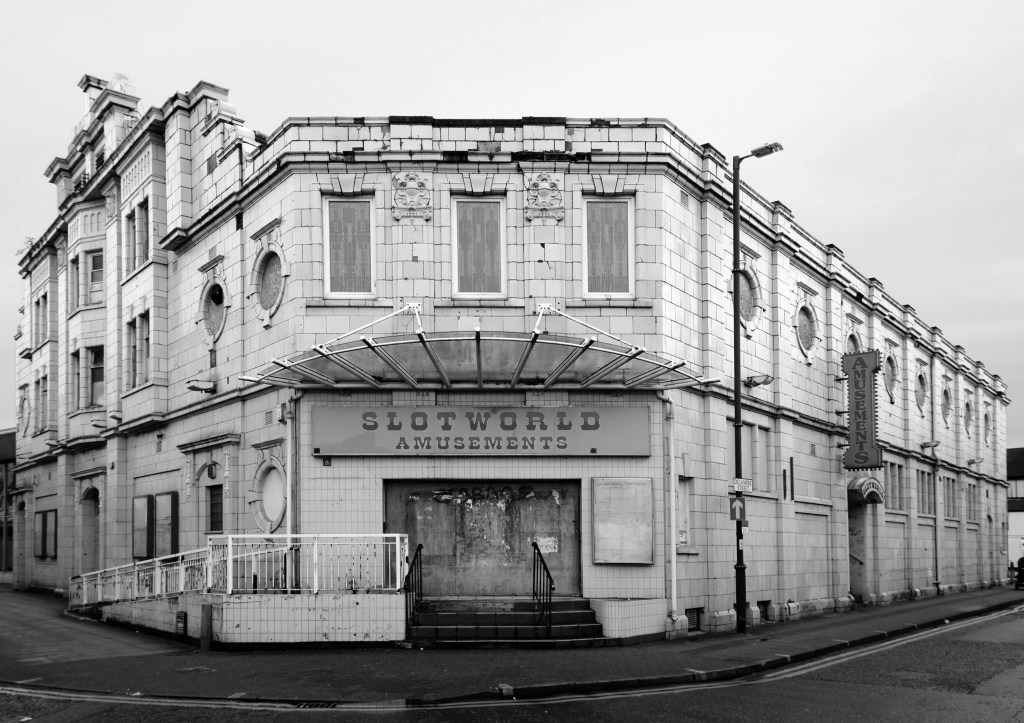
Opened 22 April 1920 with The Forbidden City the Majestic Picture House was part of the Provincial Cinematograph Theatres circuit. With 1,233 seats in stalls and balcony and a splendid facade faced in white faience tiles on two sides of the building on its prominent town centre corner site of Old Street and Delamere Street, the cinema was a great success.
It had an oak panelled foyers which had beautiful coloured tapestry’s on the walls. The interior was in a Georgian style and it was equipped with a pipe organ and a seperate tea room and cafe which were located on the upper floor.
The Metro Cinema continued as a single screen operation until the middle of 2003, sometime after a multi-plex had opened in the town. In 2008 the building was unused except for the long foyer area, linking the front and back elevations of the Metro, which was a Slotworld Amusement Arcade. By 2011, the entire building had been stripped out and stood empty and unused.
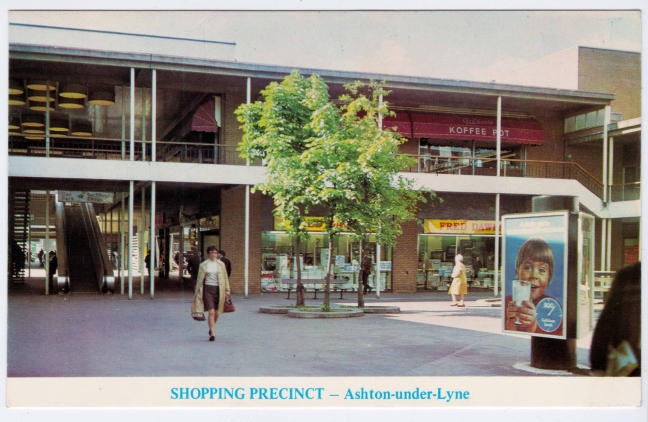
Up the road now to the monolithic Telephone Exchange.
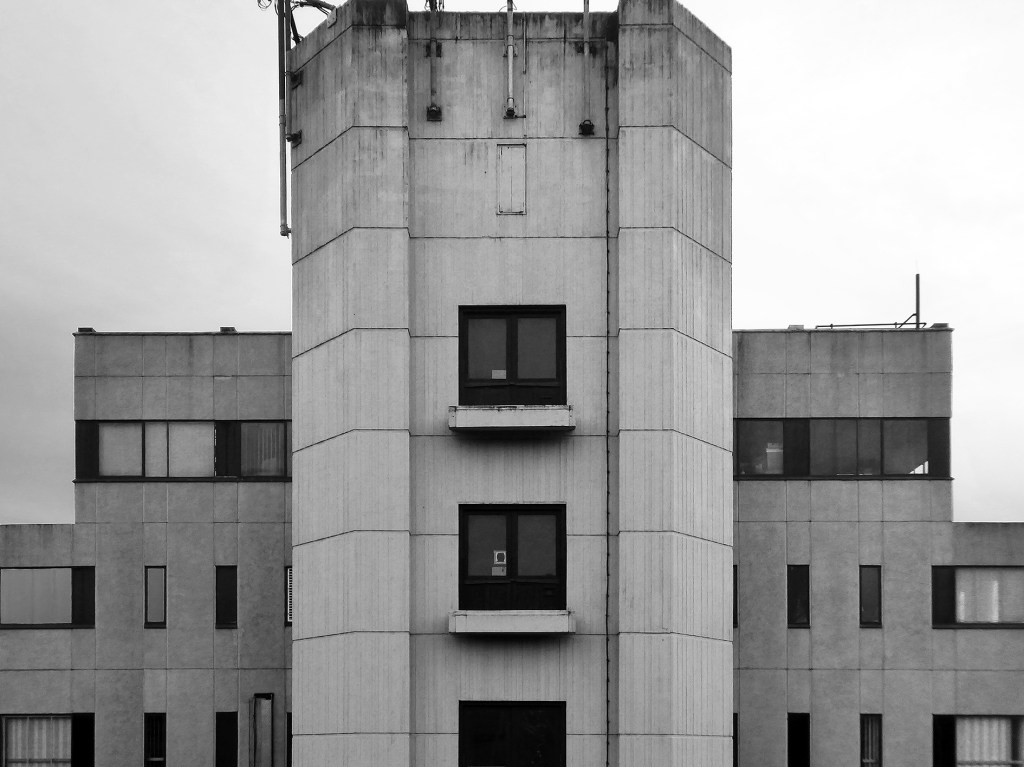
Turning back now to Burton’s.

Sadly the current occupants have covered up the mosaic.
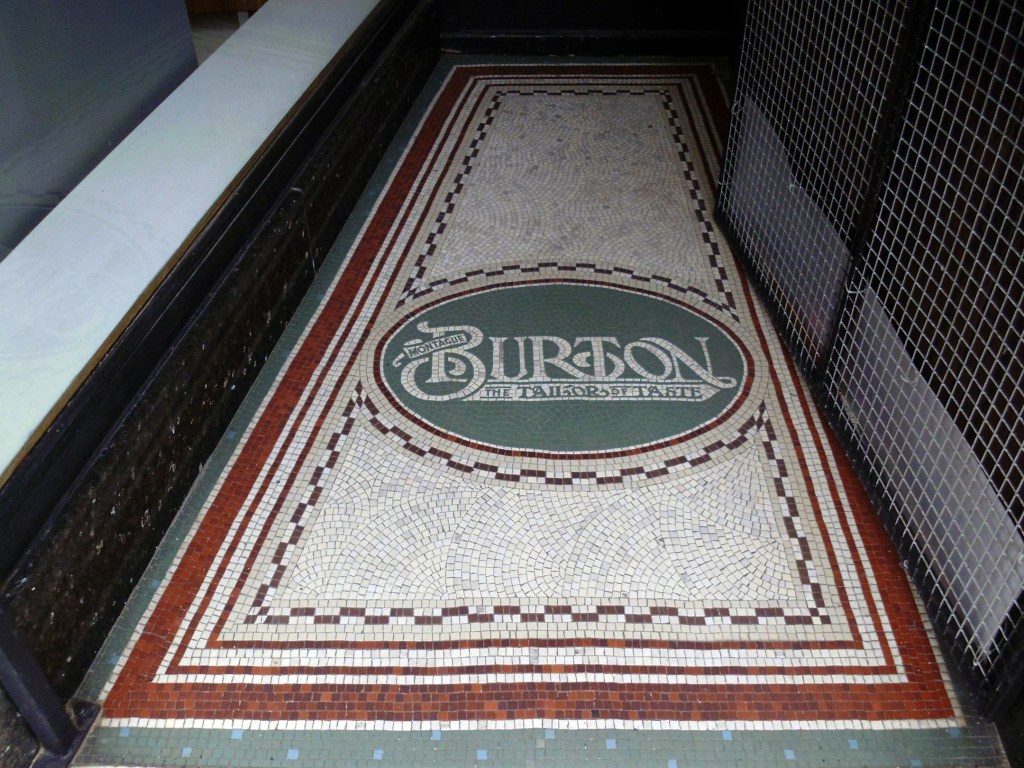
Turning again towards the Magistrates’ Courts in search of the ever so mysterious Concrete Totem.
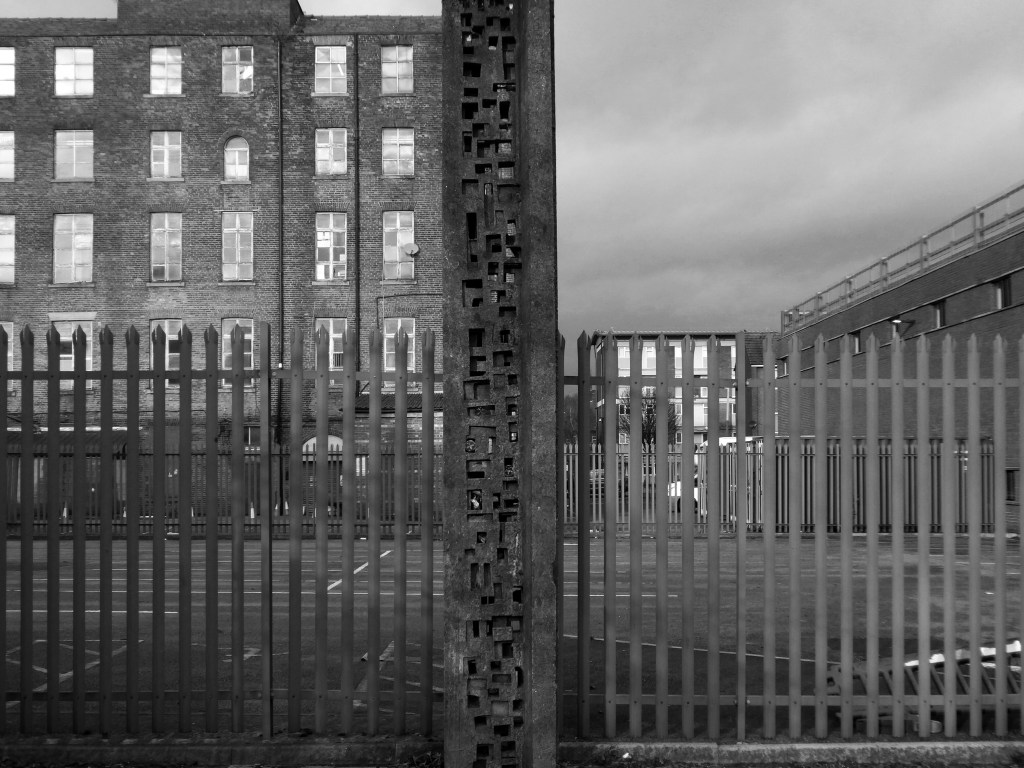
Jump the tram home or why not linger longer and sample yet more Tameside treats!


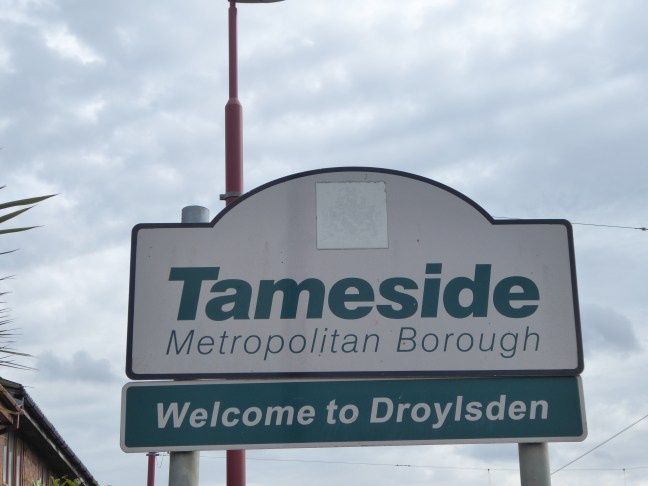
tameside treats? what like charity shops, a decrepit run down market a no soul indoor market and numerus boarded up shops ashton born and bred but absolutely ashamed of what it has become
LikeLike